Royal Northern Hospital
Holloway Road, N7 6LD
Medical dates:
Medical character:
1856 - 1992
Acute
The Great Northern Hospital was founded, at his own expense,
by Dr. Sherard Freeman Statham, an assistant surgeon, who had been
dismissed from University College Hospital for smacking a patient's
bottom.
The Hospital opened in 1856 at 11 York Road (later renamed York Way)
with 16 beds and provided medical treatment for two hours a day for the
poor of north London. The Hospital received additional funding
from the Midland, Great Northern and Metropolitan Railways, whose
employees received treatment there.
By the following year the staff had expanded to include 20 physicians,
surgeons and dentists. Two neighbouring houses - 9 and 10 York
Road - were acquired, enabling bed numbers to be increased to 50, when
finances allowed.
The Hospital was forced to move in 1862 when the premises were bought
by the Metropolitan Railway Co. A house was provided by the
railway company - 286 Pentonville Road - for use as an Out-Patients
Department. In-patients were accommodated at the Spinal Hospital
at 84 Portland Road; during this period the two Hospitals merged and
the Spinal Hospital became the orthopaedic department of the Great
Northern Hospital.
In 1862 Pembroke Villa at the corner of Caledonian Road and Twyford
Street was leased for in-patients. In 1863 the Out-Patients
Department moved to 294 Pentonville Road. Over the next three
years the Hospital expanded in more houses in Caledonian Road - Nos.
229, 231 and 233 - but purpose-built premises were still needed.
In 1883, having failed to acquire the freehold for its buildings so
that they could be redeveloped, the Hospital joined a committee which
was planning to build a Central Hospital in the same area.
The site of Grove House in Holloway Road, with just over an acre of
land, was purchased in 1884 and the Great Northern Central Hospital
with 68 beds opened in 1888.
A new block was added in 1894. In 1895 the Hospital was granted
medical school status. Further extensions to the building
included the Prince Albert Wing and a circular block with three wards.
In 1898 more ward blocks were opened.
Expansion continued throughout the early 20th century. An
Electrical Department opened in 1908. In 1911 the word 'Central'
was dropped from the title, which had been considered rather cumbersome
for some time.
During WW1 the Hospital became a section of the Second London General Hospital, with 206 beds for wounded and sick servicemen.
In 1917 the freehold of 4-5
Manor Gardens was acquired for a Nurses' Home.
An X-ray Department was installed in 1918.
In 1919 it was decided to change the name to the Royal Northern
Hospital, but this was delayed until its amalgamation with the Royal Chest Hospital in 1921. In the
same year a convalescent home opened in Grovelands,
Southgate. By this time the Royal Northern Hospital had 110 beds.
In 1922 building began for a new Casualty Department, funded by
the Islington War Memorial Fund, and a new Nurses' Home.
A School of Radiography, one of the first in the country, opened in
1929, as well as a School of Housekeeping and Catering.
During the 1930s more than 20 houses in Ingleby Road were bought for
nurses' residences, and most of the block between Manor Gardens and
Tollington Way purchased for future redevelopment. In 1931 the
three-storey St David's Wing, a private patients' block with 55 single
and 5 double rooms, opened on the Manor Gardens side of the site.
The Hospital continued to expand and, in 1937, the pharmaceutical
firm Beechams
Pills Ltd financed new laboratories for pathology, bacteriology
and biochemistry,
as well as a pharmacy. A Fracture Clinic opened in the same year,
together with an Occupational Therapy Centre and a Radiotherapy
Department.
During WW2 both the Royal Northern and Royal Chest Hospitals received
bomb damage, 85 beds being destroyed at the latter. By 1944 the
Royal Northern Hospital had 307 beds, including the 60 at Grovelands.
In 1948 the Hospital joined the NHS under the control of the Northern
Group Hospital Management Committee, part of the North West
Metropolitan Regional Hospital Board.
In 1955 the Ingleby Arms in Tollington Way became the Occupational
Therapy Department.
The Hospital merged with the Whittington Hospital in 1963.
By 1980 it had 262 beds, including 23 for private patients.
However, during a period of amalgamation in the NHS, it lost out
to its important neighbours - the Whittington, University College and
Royal Free Hospitals.
It closed in 1992.
|
Present status
(January 2008) |
|---|

The Northern Medical Centre in Holloway Road. The facade of the former Hospital has been preserved.
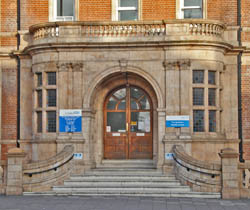
The main entrance of the Medical Centre.
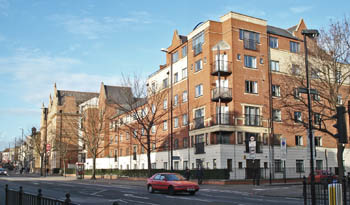
The new apartment block as seen from the south.
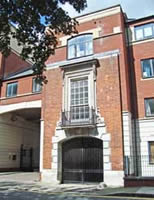

The Grade II listed Islington War Memorial Arch has been incorporated into the side of the new block in Manor Gardens (left). Looking into the courtyard of the new block (right).
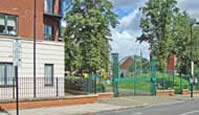
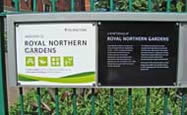
The ironwork gateway at the entrance to Royal Northern Gardens in Manor Gardens (left). A plaque on the garden gate commemorates the War Memorial (right).
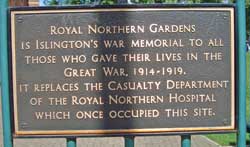
A plaque commemorating the site of the Casualty Department, which was built as a War Memorial after WW1.
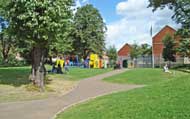
The Royal Northern Gardens.
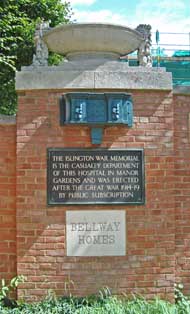
Another plaque inside the Gardens commemorating the War Memorial.
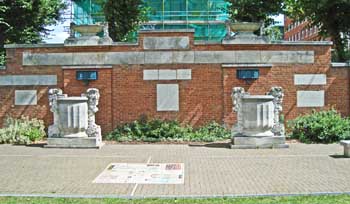
The memorial wall with masonry from the Hospital.
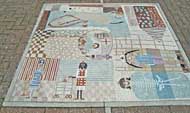
A mosaic made by local schoolchildren illustrating various aspects of medical care. It is situated on the pavement in front of the memorial wall.
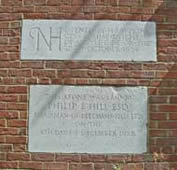
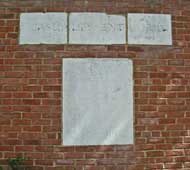
Foundation stones from the Hospital embedded within the memorial wall (above and below).
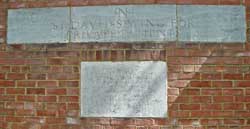
Reckitt Convalescent Home
In 1907 Mr Francis Reckitt (of the household products firm
Reckitt & Sons, today known as Reckitt
& Benckisser) donated a sum of money to provide a
convalescent home for the Hospital. A suitable site was
found in Holland Road, Clacton-on Sea, and the Reckitt Convalescent
Home of the Great Northern Central Hospital opened in 1909 with 30
beds. During WW1 it was used as an auxiliary military hospital.
The building has been demolished, as have several other convalescent
homes built in Clacton in the early 20th century.
References
(Author unstated) 1917 List of the various hospitals treating military cases in the United Kingdom. London, H.M.S.O.
Rinsler A 1992 An Illustrated History of
the Royal Northern Hospital, 1856-1992. London, Whittington
Hospital.
Sharma OP 1999 A memorable period. A small United Nations. British
Medical Journal 319, 1468.
http://hansard.millbanksystems.com